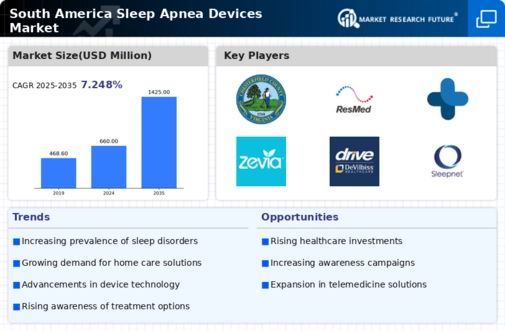The South America Sleep Apnea Devices Market is experiencing significant growth, driven by increased awareness of sleep disorders and their impacts on health. This growing market is characterized by a variety of players, including established companies and new entrants striving to capture market share.
Competitive dynamics are shaped by technological innovations, product offerings, and strategic partnerships within the healthcare ecosystem. As the prevalence of sleep apnea rises, especially in countries with high obesity rates, stakeholders are focusing on delivering advanced therapeutic and diagnostic solutions.
In addition, government initiatives aimed at improving healthcare standards and increasing the accessibility of sleep apnea treatment are fostering a competitive landscape that encourages research and development while promoting better patient outcomes.
Fisher and Paykel Healthcare has carved a niche for itself by providing high-quality respiratory solutions in the South America Sleep Apnea Devices Market. The company is recognized for its innovative approach to sleep therapy devices, particularly focusing on user-friendly, effective technologies that enhance patient compliance and comfort.
With a substantial market presence, Fisher and Paykel Healthcare benefits from a robust distribution network that facilitates easy access to its products across various regions. Their commitment to ongoing research and development allows them to continually improve their product offerings and maintain a strong competitive edge.
The emphasis on quality, adaptability to local market needs, and effective clinical support services further solidifies their position as a key player in this market.
CHEST, renowned for its expertise in pulmonary and sleep medicine, plays an important role in the South America Sleep Apnea Devices Market. The company's comprehensive portfolio includes a range of products such as continuous positive airway pressure (CPAP) devices, auto-titrating devices, and accessories dedicated to sleep apnea management.
CHEST has established a solid presence in the region through a combination of strategic partnerships and collaborations with medical institutions that enhance its visibility and service reach. One of the strengths of CHEST lies in its innovative technologies that offer customized solutions for diverse patient needs.
The company has also engaged in mergers and acquisitions that have not only expanded its product line but have also bolstered its market position, allowing it to compete effectively in the growing South America sleep apnea landscape.





















Leave a Comment